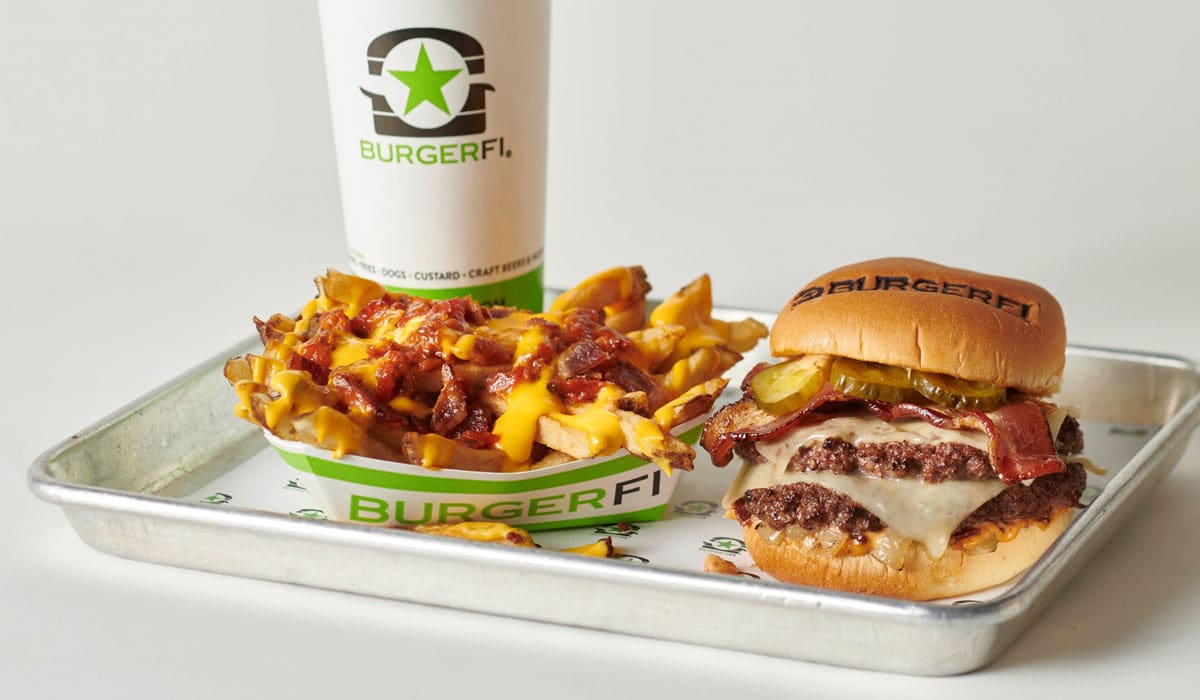In late April, BurgerFi had the opportunity to hear how franchisees truly feel about the brand’s direction when it hosted a franchise summit for the first time since COVID began.
The meeting featured operators, general managers, restaurant support leaders, and supply partners. John Iannucci, who is leading the company on an interim basis in lieu of former CEO Ian Baines’ retirement announcement, said the “energy level and enthusiasm couldn’t have been higher.” A post-event survey found positive feedback.
“It was our first in four years. And so I think as we attempted to unify the brand, I would say we were pretty successful,” Iannucci said during the brand’s Q1 earnings call. ” … It was really important, and it turned out to be, I think, a catalyst for what we expect to see for the rest of the year as far as excitement for the brand.”
Catalyst is the operative word and something the brand is searching for as systemwide same-store sales decreased 4 percent in Q1. It’s an improvement from the fourth quarter when comps dropped 9 percent. BurgerFi finished the quarter with a store-level operating margin of 12.6 percent, a 100-basis-point jump above last year. Also, margins sequentially increased 320 basis points from the fourth quarter. The better profit was fueled by stable procurement, pricing, and controlling store operating expenses, said Iannucci. BurgerFi carried 6-8 percent pricing in Q1. There aren’t any actions planned for Q2, but the chain will reevaluate in Q3 and Q4, said CFO Michael Rabinovitch.
Aiding profitability is the expansion of in-store kiosks. BurgerFi first released the innovation during spring 2022 at three corporate locations. Based on its success, kiosks spread to almost all company-owned stores throughout the fall. Some franchisees began adopting the technology in the fourth quarter, and more started signing up after demonstrations during the franchise convention. Kiosk orders consistently see higher average check because of the AI suggestive offerings, Rabinovitch said. When combining those sales with web, app, and third-party delivery, restaurants are at 60-70 percent digital revenue generation.
“Now I think that there’s still more room to go. We’d love to see the kiosks becoming a critical element of all of our franchises,” Rabinovitch said. “We’d like to see the customer experience continue to improve because the software on the kiosk is not fixed. It’s something that we reintroduce and augment all the time. So it’s a very good tool, and we’re excited with it.”
BurgerFi is also creating interest with its LTO program, starting with the launch of the BBQ Rodeo Burger in February. Because of its success, the fast casual extended the LTO and rolled out a new patty melt version. Ahead of St. Patrick’s Day, the brand released a new mint shake with Oreo, and earlier this month, it debuted a new Texas Toast Patty Melt. At Anthony’s Coal Fired Pizza & Wings, there was a new pizza LTO in partnership with Mike’s Hot Honey.
“Are they really driving a sales lift in terms of incrementality? Probably not,” Rabinovitch said. “They’re probably not moving the needle, but they really give us a great platform to communicate with the customer and continue that love affair that they have with both of our brands.”
As of April 3, BurgerFi had 112 restaurants, including 85 franchises and 27 corporate units. In Q1, the fast casual opened two franchises and transferred two franchise stores to company-ownership. Rabinovitch explained that the transfers were a result of ligation with the former owner of BurgerFi and a significant shareholder. As part of the legal settlement, the company agreed to take on his stores.
In terms of closures, BurgerFi shut down four franchise locations in Q1. Rabinovitch said these businesses were already closed and their termination process wrapped up in the quarter. In 2022, the brand shuttered a net of four locations, but 2023 is expected to end on a net positive basis. BurgerFi reconfirmed its projection of 15-20 openings for the fiscal year (all franchised), and Rabinovitch said the chain isn’t expecting many more closures.
Airports are a growing part of the strategy. BurgerFi began 2023 development with the opening of a franchise unit in Newark Liberty Airport. The second location is planned for Fort Lauderdale-Hollywood International Airport later this year. Several others are under negotiation for late 2023 and into 2024.
So far in Q2, one BurgerFi outlet has opened, and a second is expected by the end of May. In the third quarter, franchisee NDM Hospitality Services in Kissimmee, Florida, will open the first co-branded BurgerFi and Anthony’s. The agreement calls for three additional franchised Anthony’s locations in the next two years. Those remaining two will be freestanding, smaller prototypes in Miami.
Anthony’s, which has 60 company-owned units, saw same-store sales increase 3 percent in the first quarter. The casual-dining chain is seeing recovery in Northeast locations that were lagging in comparison to Florida-based units. The brand finished Q1 with a 17.9 percent store-level operating margin, good for a 310-basis-point improvement year-over-year. Compared to Q4, margin grew 270 basis points.
“We have two very high-quality brands that are on trend with the consumer and are laser-focused on enhancing operations and driving sales to achieve profitable growth,” Iannucci said. “We further believe we’re in the early innings of our growth story with significant white space ahead.”
BurgerFi reiterated its 2023 guidance of $175-180 million in total revenue, low-single-digit increases in same-store sales, $10-12 million in adjusted EBITDA, and $2 million in capital expenditures.







